What's New
Displaying results 3911 - 3920 of 4052
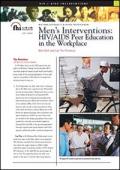
Resource | Publications,
In Viet Nam, there are few AIDS prevention programs or Behavior Change Communication (BCC) materials targeted toward sexual health and healthy living needs of the general population of men who may be susceptible to HIV infection through their sexual activity or drug use.
The "Workplace Peer Educators", a component of the Men's Intervention project, has trained men to serve as HIV/AIDS peer educators for both men from the local community and temporary migrant workers who are working in the factories. Some women working at the factories also benefit from the HIV/AIDS education and information provided.
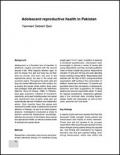
Resource | Publications,
Adolescence is a formative time of transition to adulthood, roughly concurrent with the second decade of life. What happens between ages 10 and 19 shapes how girls and boys live out their lives as women and men—not only in the reproductive arena, but also in the social and economic realms. Throughout the world, girls and boys are treated differently from birth onward, but at puberty this gender divide widens.
Boys enjoy new privileges, while girls endure new restrictions (Mensch, Bruce & Greene, 1998). In Pakistan, boys gain autonomy, freedom of movement, opportunity, and power (including power over sexual and reproductive lives of girls), while girls are systematically deprived of freedom and independent action. Only recently have the sexual and reproductive health needs of adolescents received attention in Pakistan. As part of an initial situation analysis, investigators conducted a study to explore unmarried adolescents’ knowledge, attitudes and sources of information about sexual and reproductive health, as well as to assess levels of physical and sexual abuse.
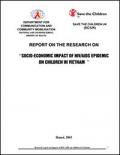
Resource | Publications,
HIV/AIDS is a children’s issue. In Vietnam, as elsewhere, the highest incidence of HIV infection occurs in the 20 – 30 age group, as well as the fastest growing rate of increase. Mother to child transmission is also increasing. And by the end of 2002, more than 10% of reported cases of HIV infection were under 19.
This particular study therefore seeks to contribute to a greater understanding of how the HIV/AIDS epidemic impacts on children. The conceptual framework is based on the Convention on the Rights of the Child, signed and ratified by Vietnam and almost all other countries in the world.
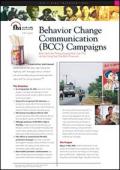
Resource | Publications,
Begun in May 2000, USAID-funded and FHI supported decentralized and comprehensive Behavior Change Communication (BCC) work reaches four provinces: Hai Phong, Can Tho, Quang Ninh and Binh Dinh. Targeted BCC work in Ha Noi, Dong Nai and Thai Binh began mid-2002. Provincial AIDS Standing Bureaus (PASB) designed the projects with FHI support. The local governments, PASBs and mass organizations implement the interventions, under the guidance of FHI. Basic, intensive and advanced BCC training and ongoing technical support from FHI are key to building local capacity in BCC work. The IEC centers of Provincial Health Services play a key role in the development of materials and for training for interpersonal communication through peer and health educators. Local artists and writers tailor messages and images to reflect local realities and target populations. FHI is encouraging use of private advertising agencies and marketing firms to develop effective media products for dissemination.
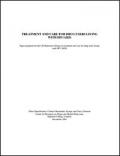
Resource | Publications,
This report has been prepared in October-April 2004 by the Centre for Research on Drugs and Health Behaviours at Imperial College on behalf of the UN Reference on HIV/AIDS prevention and care among IDUs in developing and transitional countries. Its purpose is to examine the extent to which the international community’s commitment to adequate and equitable care for those with HIV/AIDS has been translated into action in developing and transitional countries particularly when applied to injecting drug users. The provision of effective treatment and care for all people with HIV/AIDS is now accepted as an integral component of a comprehensive and expanded response to the epidemic. All member states of the United Nations and partner international agencies are committed to reducing the gap between developed and developing countries and making treatment and care available to all who require it.
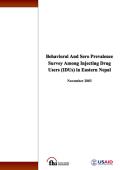
Resource | Publications,
The injecting drug users function as a “bridging population” for HIV transmission between a core HIV risk group and the general population. The main objective of this study is to estimate the prevalence of HIV among IDUs and assess their role in the transmission of HIV. The study was conducted in the three districts: Morang, Sunsary and Jhapa of Eastern Nepal. Three hundred and forty-five IDUs were sampled from 23 randomly selected sites, through respondent-driven sampling (RDS).
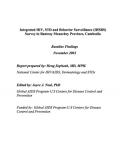
Resource | Publications,
AIDS is the leading cause of death for people aged 15-29 in the world, and although rates have declined slightly in recent years, Cambodia still has the highest HIV seroprevalence in Asia. HIV can be transmitted through blood products and injection drug use but heterosexual contact, primarily through the sex trade, remains the major route of HIV transmission in Cambodia.
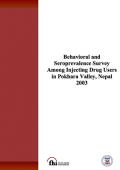
Resource | Publications,
Injecting drug user function as a “bridging population” for HIV transmission between a core HIV risk group and the general population. The main objective of this study is “to estimate the prevalence of HIV among IDUs and assess their role in the transmission of HIV.” The study was conducted in Pokhara Valley of Kaski districts. Three hundred IDUs were sampled from 20 randomly selected sites, through respondent-driven sampling (RDS).
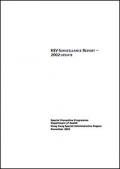
Resource | Publications,
Hong Kong, located in Asia the new burning place of HIV infection, is still having a relatively low prevalence of HIV infection. While sexual transmission is the predominant route of transmission in Hong Kong, an upsurge of infection in injecting drug users is a concern from the experience in other Asian localities. Various public health measures in Hong Kong have kept the HIV prevalence of drug users at low level, as compared with neighbouring cities.
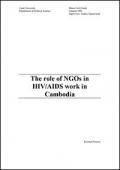
Resource | Publications,
The aim of this study is to discuss the role of NGOs in HIV/AIDS work, but also what capability the government possesses in the field, in Cambodia. The starting-point is that the HIV/AIDS situation and the NGO community in Cambodia are unusual. The Cambodian state is seen from a weak state perspective. A policy process approach is used to see in what phases the actors are capable and incapable respectively.
It was found that both NGOs and the government take advantage of each others weaknesses and strengths. The government does not emphasise implementation due to that NGOs constitute a strong group of actors in this field. Still, in formulating HIV/AIDS sensitive policies the government is active and the Cambodian political commitment in relation to HIV/AIDS is unique in a Third World perspective.





